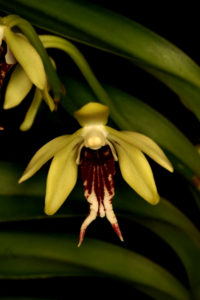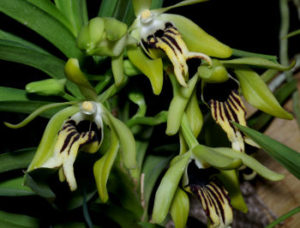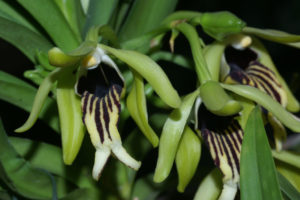The following article was written for the Orchid Species Bulletin published by the Orchid Species Society, which is based in Brisbane, Queensland in December 2011.
Bear in mind that any cultivation notes refer to the subtropical conditions of Southern Queensland, Australia.

Trudelia cristata (Lindl.) Senghas was discovered by Nathaniel Wallich in Nepal in 1881 and he managed to send plants back to the Royal Botanic Gardens, Kew. John Lindley first described this species as Vanda cristata Lindl. in his Genera and Species of Orchidaceous Plants in 1834. Its specific epithet is from the Latin cristatus (crested) for the uneven and furrowed lip surface. Karlheinz Senghas transferred it to Trudelia in Die Orchideen in 1988.
Leslie Garay established Trudelia in the Orchid Digest in 1986, based upon Trud. alpina (Lindl.) Garay. The genus consists of six species with small flowers, primarily found in the Himalayas to southern China. The flowers have subsimilar sepals and petals that are never reflexed and a prominent lip that is continuous with the base of the column. Its lip is excavate at the base, spurless and directed forward and outward. Eric Christenson (1992, 1994) believed that this species belongs to Vanda section Cristatae Lindl.

Trud. cristata is a small- to medium-sized monopodial plant with stout stems that are 7.5-15 (-30) cm long. The stem is covered in the lower portion with the dried remains of overlapping leaf sheaths. Thick roots emerge from the lower portion and pierce through the leaf sheaths. Leathery recurved leaves that are 7.5-12.5 cm long and 12-18 mm broad are borne in two ranks along the upper portion of the stem. The leaf tips are distinctively truncate, tridentate or irregularly three-toothed. Short inflorescences are produced from the leaf axils. The racemes carry 2-6 waxy faintly fragrant flowers that are borne on long twisted pedicels close to the stem.

The flowers are variable in colour and are 4-5 cm across. They have uniform yellow to green, narrow incurved sepals and petals. The thick, fleshy prominent lip is golden-yellow, cream or white, striped with violet-purple to maroon or red-brown. Its tapered lip mid-lobe bears two slender elongate processes or horn-like processes at the end, which look like tusks. Martin Motes (1997) points out that the lip morphology and colouration varies greatly. Not only does it vary from flower to flower on the same inflorescence but also markedly year to year on different flowerings of the same plant.
An inhabitant of montane forests, Trud. cristata is found between (600-) 1,000-2,100 m altitude. Plants usually grow on tree trunks of Rhododendron arboretum and Skimmia spp. It is distributed from northern India, Nepal, Sikkim, Bhutan and Bangladesh. An intermediate- to cool-growing species, Trud. cristata requires about 70% shade with good air circulation at all times. This species seems to do best with a summer maximum of 28-30 oC. Grow it in a well-drained medium, water it regularly and maintain high humidity during the warmer months. Give it a cooler drier rest in winter. Plants will still need occasional misting or water in the morning on sunny days to prevent the leaves from shrivelling.
